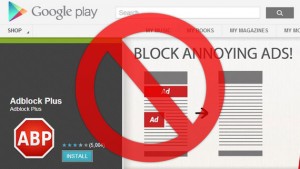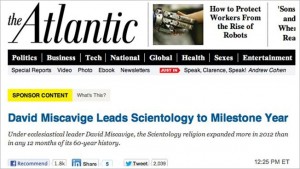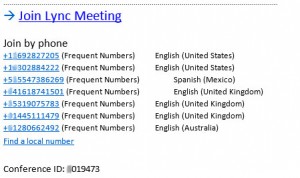On a chilly April night last week, Jacob Weisberg, founder of Slate and current group publisher, gave the Columbia Journalism School’s Delacorte Lecture, which traditionally pries nearing-graduation students away from their almost-finished theses.
Not anymore.
“I was scared when I found out this is no longer compulsory,” Weisberg said. “But then they told me there was free food.”
Weisberg’s musings on the state of Journalism to the packed, room give much-needed texture and background into yesterday’s announcement of Slate Plus.
A Sobering Picture
It’s not exactly raining dollars out there.
The now-profitable Slate.com has ninety employees, all with health insurance, and pays its interns. “We don’t just want kids of privilege working here,” says Weisberg. “I think you can work at Slate and actually have a middle class lifestyle.” He tests this statement against a Slate employee sitting in the first row who gives an assenting nod to his boss.
Slate and certain other prominent publications are finding “survivable niches,” he says, and business models that “support continued existence.” Two key tactics are sugar daddies and paywalls. The Washington Post has Jeff Bezos’ backing, the New Republic has Chris Hughes’. Paywalls range from the New York Times’ porous barrier, to the Financial Times strict one.
Diversification is Key
The Atlantic has a significant events-related revenue stream. But whether it’s events, paywalls or wealthy backers, Weisberg says you can’t rely on ad revenue alone. “The more revenue streams you have, the healthier you are.”
And for Slate.com, a paywall is off the table.
So what’s with Slate Plus? Isn’t that a form of paywall?
Weisberg calls it “the NPR model.” Which means leveraging the healthy guilt that motivates a certain percentage of loyalists.
“To develop the idea, we relied on data.” Slate surveyed heavy users, those coming at least 25 times a month. Based on this, a cornerstone of the offering is interaction with the Slate personalities. This desire surprised Weisberg, who says he wasn’t aware of the growing Slate team’s celebrity.
Weisberg’s other non-Slate-Plus-related observations were studded with gems, hints and tips from the front lines of digital journalism. Read on for these.
VC Money Flowing to Content Sites
For years, VCs wanted nothing to do with content sites. New York Ventures, a famed Twitter financier, said it would never invest in an enterprise that required an editor. It was all about “platforms.”
Now that’s changed. Weisberg cites the following endeavors with money (VC and other) flowing in:
- HuffPo
- Buzzfeed
- Vox
- Business Insider
- Upworthy
- Medium
“The key element seems to be the potential for exponential growth,” he says.
But this money flow poses dangers to broader journalism, says Weisberg. “Ad dollars going to buzzy sites that don’t have to make money to survive drives CPMs down for everyone. All the capital forces up the cost of editorial talent with no revenues to go against it.” Forbes.com is a kind of poster child from the “frothy junky side,” with a strategy of clickbait-until-sale.
Not-for-Profit Journalism
Examples in this category include ProPublica, the Texas Tribune and Bill Keller’s new Marshal Project dedicated to criminal justice reporting.
When it comes to state-and-local coverage and investigative journalism, “There’s no business in these two categories. They were always subsidized, just in the old days it was from classifieds revenue.”
Mobile
“All the growth is on mobile for everyone,” says Weisberg. While Slate is seeing some marginal desktop increases, other publications are seeing accelerating erosion to devices.
“I didn’t think anyone would ever read long-form on the phone,” says Weisberg. “It surprised the hell out of me. Now people are willing to read War and Peace on their phones.”
What about the low CPM on mobile? “My bet is that CPMs on mobile will go up a lot,” he says. “What we’re seeing at Slate. An ad view is an ad view is an ad view. There’s no reason to pay eight times for the desktop. A user on mobile is actually more engaged.”
To wit: Slate’s September redesign made the site responsive on mobile.
Social
The site redo also optimized for Facebook’s new algorithm that rewards original content. The lift was substantial, with Slate achieving 31+MM uniques in March, double September’s number.
Video
The CPMs are high. The viewership stinks.
“Getting someone to watch a video over 30 seconds is a heavy lift. And who is going to watch a ten second pre-roll for a 30-second video?” The videos on Slate.com are an answer to advertisers who all but require it. “We have video for big ad packages,” Weisberg says.
If you want a format that seems to work, at least very well for Slate, try podcasts.
Long form and the “Fresca Fellowship”
Named after Slate’s Editor in Chief and Fresca drinker David Plotz, the “Fresca Fellowship” refers to the five weeks a year that each Slate writer is allotted to work on a long-form piece.
Weisberg says he is surprised at how well long form is working for Slate. And it’s profitable business, as advertisers love the readership that’s attracted to the 5,000-8,000 word pieces, often enhanced with multimedia.
It’s interesting, Weisberg notes, the way the 250-word “nibbles” synergize with long form. “It’s like the one creates an appetite for the other. What we’re seeing is that the middle drops out. The Newsweek-length pieces that run 2000 words. It seems to be short and long that’s succeeding.”















